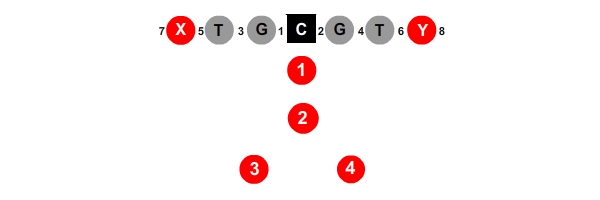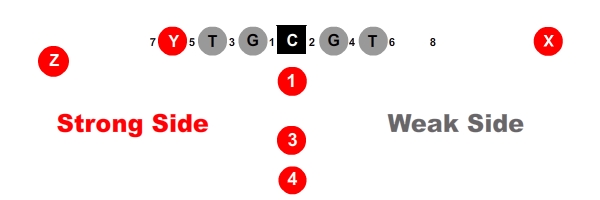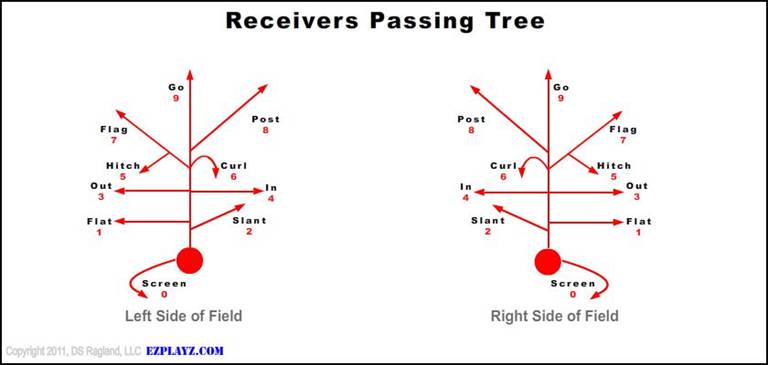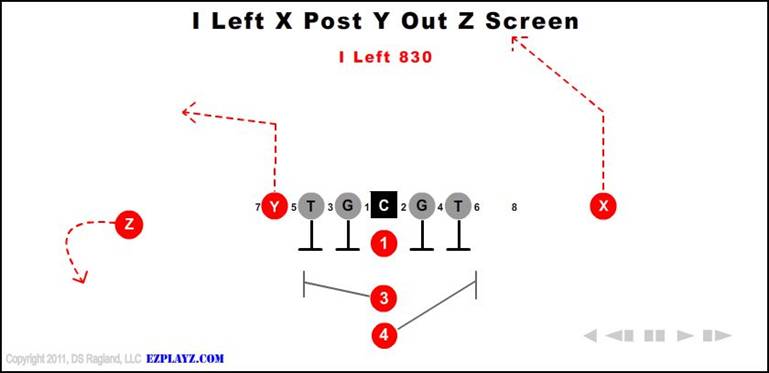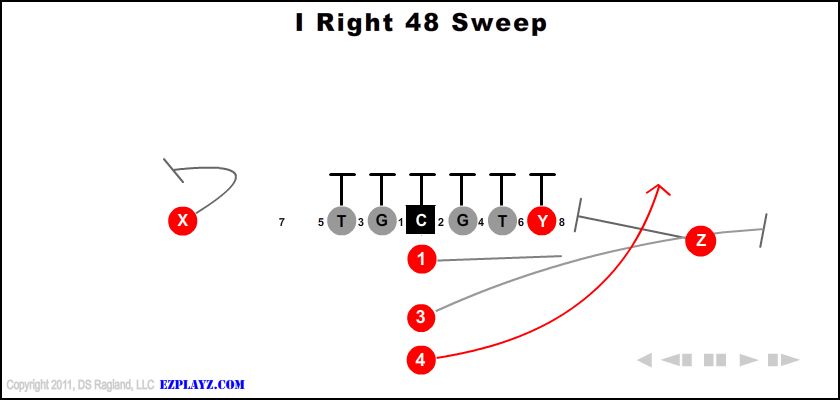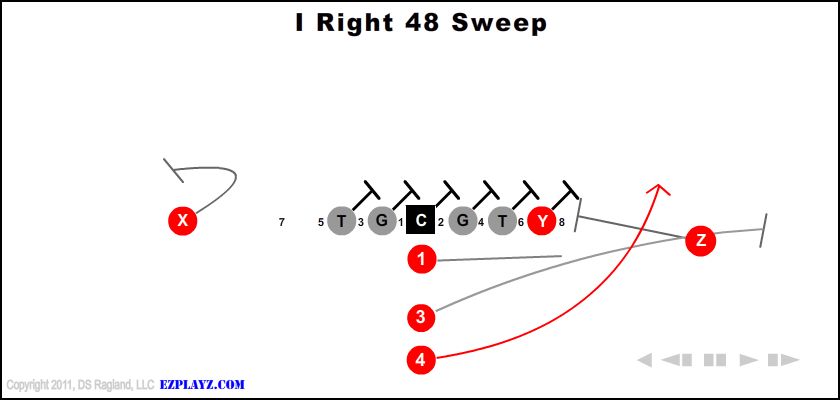This is by no means a slam against the parents of youth football players who get a bit exuberant about their kid, but rather a view of your over-exuberance from a coach’s perspective.
We coaches love coaching youth football! It usually starts out as a way to spend more time with your son and it grows into something more. My son is moving on to 8th grade football and I can no longer be his coach. Man I will miss it. I’m sure he won’t! He says I yell at him to much; sorry son! It is this love of coaching kids and being a positive role model to a young man, which in many cases, unfortunately, does not have a positive male role model in their life, and is why I’ve decided to continue coaching with Coach Alkire on a brand new 11 year team this year. I can’t wait.
Now back to my point. With the pre-season planning that goes on, you start to get excited about all of the aspects of forming your new team and then it snaps into the back of your mind like a haunting childhood memory… That Football Parent who is out to make your life hell!
We have all had parents of players who are just not happy no matter what you do –
“Little Johnny should be the running back because he’s really fast!”
“Little Johnny should be the QB because you should see him throw it in the back yard!”
“Little Johnny is not happy playing Guard and wants to run the ball. I know he’s a first year player but you should give him a shot”
We’ve all heard the same complaints and experienced the same problems. Here are some tips to prevent some of it down the road.
After you have drafted your team call a parents meeting and hand out the team rules.
1. Don’t ever ask the Coach if their son can play a specific position.
2. A parent should never talk badly about the coach, coaching staff or other players in front of their child.
3. Parents should only address the head coach with concerns or problems; do not approach the assistant coaching staff with your complaints.
These seem like pretty simple rules, maybe perceived a bit “forceful” by some, but they are crucial in order to develop a cohesive unit of a team. Time wasted dealing with issues that do not benefit your player’s development hurts your team as well as your players.
Even with these simple rules in place there’s always one.
A few years back we had a player on our team that had fantastic speed… mind boggling speed. He was raw, a bit scared, but I thought with some work we could get him in the backfield sweeping all over the field. He was scared to take a hit, but then again there are not too many first year players that aren’t scared to take a hit. He did have some good pursuit ability, so I put him at Corner. Wasn’t the best Corner, but effective enough to push the play back in where he had some help.
A few weeks went by and I noticed the kid repeatedly asking why he can’t run the ball. He told me his dad said he should be running the ball… uh oh… here we go. I told him he was building more confidence in his ability and I would let him know when he’s ready.
Another week went by and his practices that week were going great. I had made the decision that I would put him at 4-back in Thursday’s practice. Well after I got home that night (Tuesday) I received a 3 page email from his father copied to the entire coaching staff. Won’t go into the details, but to sum it up in a few words I would say “You’re stupid and all of the coaches are stupid and I will take a team next year and show you guys.” Obviously there was quite a bit more verbal diarrhea, but that pretty much sums it up.
Needless to say the player never got a chance to play the 4-Back position. Not as a punishment to the kid, but because of the harm his attitude towards the coaches, which his father instilled in him, would do to the team.
Football can be a great experience or it can be a bad one. It’s up to us coaches making sure that the staff, the players and the parents work together as a unit.
When you do get that parent on occasion, take them to the side and remind them that you are not get paid to coach youth football, but you are doing it because of the kids. And if that doesn’t work, tell them good luck with the team they are coaching next year!
How to use EZPLAYZ
Organization and execution….those 2 words are crucial to the success of any youth football program and I’m not aware of a coach who wouldn’t utilize all the tools at his disposal to ensure that his team enjoys the most successful season possible. This is where EZPLAYZ can help! Coach Ragland and I have teamed up to bring you the simplest, most comprehensive animated football playbook ever created. With its easy-to-use format, your players will be able to VISUALIZE the plays at home which, in turn, will afford you more time to INSTRUCT them on how to properly EXECUTE the plays. From there, all you have to do is WIN!
EZPLAYZ Receiver Designations
In a Balanced Formation (eg. Wishbone):
- X receiver is always on the left side of a balanced formation (typically a Tight End).
- Y receiver is always on the right side of a balanced formation (typically a Tight End).
Wishbone Formation
In a Strong Side/ Weak Side Formation* (eg. I Left)
- X receiver is the eligible receiver on the weak side of the formation.
- Y receiver is the inner eligible receiver on the strong side of the formation.
- Z receiver is the outside eligible receiver on the strong side of the formation.
I Left Formation
- For the understanding of your players, the strong side of the formation is the side on which there are more players. Conversely, the weak side is the side with fewer players. Make sure your players don’t get this confused with the wide side and short sides of the field.
EZPLAYZ Passing Routes (Passing Tree) and Play Naming
Receivers Passing Tree
Play Naming with Passing Routes
- EZPLAYZ utilizes two (2) play names for some passing plays. In this example, there is a long version (I LEFT X POST Y OUT Z SCREEN) to make sure that when the play is called, it is completely clear to the players; specifically those who are going out on the routes.
- The shorter version (I LEFT 830) is for the more experienced players. The numbering system always goes from Weak to Strong Side. In the example above, X-8; Y-3; Z-0
EZPLAYZ Blocking Schemes
EZPLAYZ offers three different blocking schemes:
- Zone Blocking
- Blocking Rules
- Pass Blocking
We have intentionally chosen not to put in detailed blocking assignments for a number of reasons:
- Quite simply there are just too many combinations of blocks and defenses the line may be encountering to cover them all. For example, if you were to cover all the blocking possibilities for a 7 man front against a 4 man D-Line, there are 840 possibilities of how that 7 man front can block!
- You have your own blocking rules that you want to implement in your strategy.
- Specific blocking schemes that I design as a coach are based on my talent and strategy which will both differ from yours. The last thing you need is a play that demonstrates something very specific which will not be applicable to your team.
Blocking Rules
Blocking rules are your rules that you want your kids to follow. Whether GOOLS (Gap-On-Outside-Linebacker-Safety) or some other standard blocking scheme or even your own, our Blocking Rules play format allows you a great deal of flexibility.
Blocking rules are your rules that you want your kids to follow. Whether GOOLS (Gap-On-Outside-Linebacker-Safety) or some other standard blocking scheme or even your own, our Blocking Rules play format allows you a great deal of flexibility.
Zone Blocking
Zone Blocking is blocking towards the play side of where the play is going. I’ve had a lot of coaches argue with me over Zone Blocking. They say, “Why in the world would you want to block where the play is going?”, well I’ll tell you why, simple physics.
“Push the player in the direction they are already going!”
This is exactly what makes this an effective blocking scheme. It is much easier to push someone in the direction they are already moving, versus pushing them in the opposite direction. This also allows the opening up of running lanes for a quick footed running back to exploit as well as upfield blocking by your linemen in the second and third levels.
Blocking away from the play is effective only as long as you can hold your block, once you lose your block you are out of the play and the player you were blocking is free and clear to wreak havoc on your runner.
Zone blocking also allows you to better utilize a smaller line and still be effective. Let’s face it in youth football you can have mismatches of 140 pounds versus 80 pounds. If the 80 pounder is trying to push the 140 pounder in the opposite direction, he will lose that battle 99% of the time.

